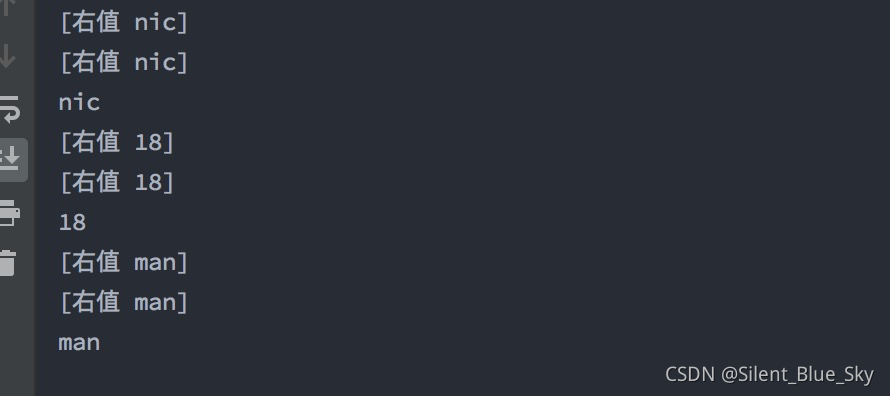溫馨提示×
您好,登錄后才能下訂單哦!
點擊 登錄注冊 即表示同意《億速云用戶服務條款》
您好,登錄后才能下訂單哦!
小編給大家分享一下C++如何實現泛型裝飾器,相信大部分人都還不怎么了解,因此分享這篇文章給大家參考一下,希望大家閱讀完這篇文章后大有收獲,下面讓我們一起去了解一下吧!
簡單寫了個 c++ 裝飾器,主要使用的是c++ lamda 表達式,結合完美轉發技巧,在一定程度上提升性能
#define FieldSetter(name, type, field) \
type field; \
name() {} \
name(const type& field): field(field) { \
cout << "[左值 " << field << "]" << endl; \
} \
name(const type&& field) : field(move(field)){ \
cout << "[右值 " << field << "]" << endl; \
} \
name(const name& other) { \
field = other.field; \
cout << "[左值 " << other.field << "]" << endl; \
} \
name(const name&& other) { \
field = move(other.field); \
cout << "[右值 " << other.field << "]" << endl; \
}
struct ObjectField {
FieldSetter(ObjectField, string, name);
};
struct AgeField {
FieldSetter(AgeField, int, age);
};
struct SexField {
FieldSetter(SexField, string, sex);
};
void DecoratorTest() {
auto Object = [](auto ob) {
cout << ob.name << endl;
};
auto Age = [](auto age) {
cout << age.age << endl;
};
auto sex = [](auto sex) {
cout << sex.sex << endl;
};
auto withDecorator = [](auto &&head, auto &&tail, auto &&...hargs) {
head(forward<decltype(hargs)>(hargs)...);
return [f = std::move(tail)](auto &&...args) {
return f(forward<decltype(args)>(args)...);
};
};
auto nameWithAge = withDecorator(Object, Age, ObjectField("nic"));
auto withDecoratorWithSex = withDecorator(nameWithAge, sex, AgeField(18));
withDecoratorWithSex(SexField("man"));
}
int main() {
DecoratorTest();
}輸出

左值:表示傳參的過程中調用了拷貝構造函數
右值:表示在傳參過程中調用的是 移動構造函數
以上是“C++如何實現泛型裝飾器”這篇文章的所有內容,感謝各位的閱讀!相信大家都有了一定的了解,希望分享的內容對大家有所幫助,如果還想學習更多知識,歡迎關注億速云行業資訊頻道!
免責聲明:本站發布的內容(圖片、視頻和文字)以原創、轉載和分享為主,文章觀點不代表本網站立場,如果涉及侵權請聯系站長郵箱:is@yisu.com進行舉報,并提供相關證據,一經查實,將立刻刪除涉嫌侵權內容。